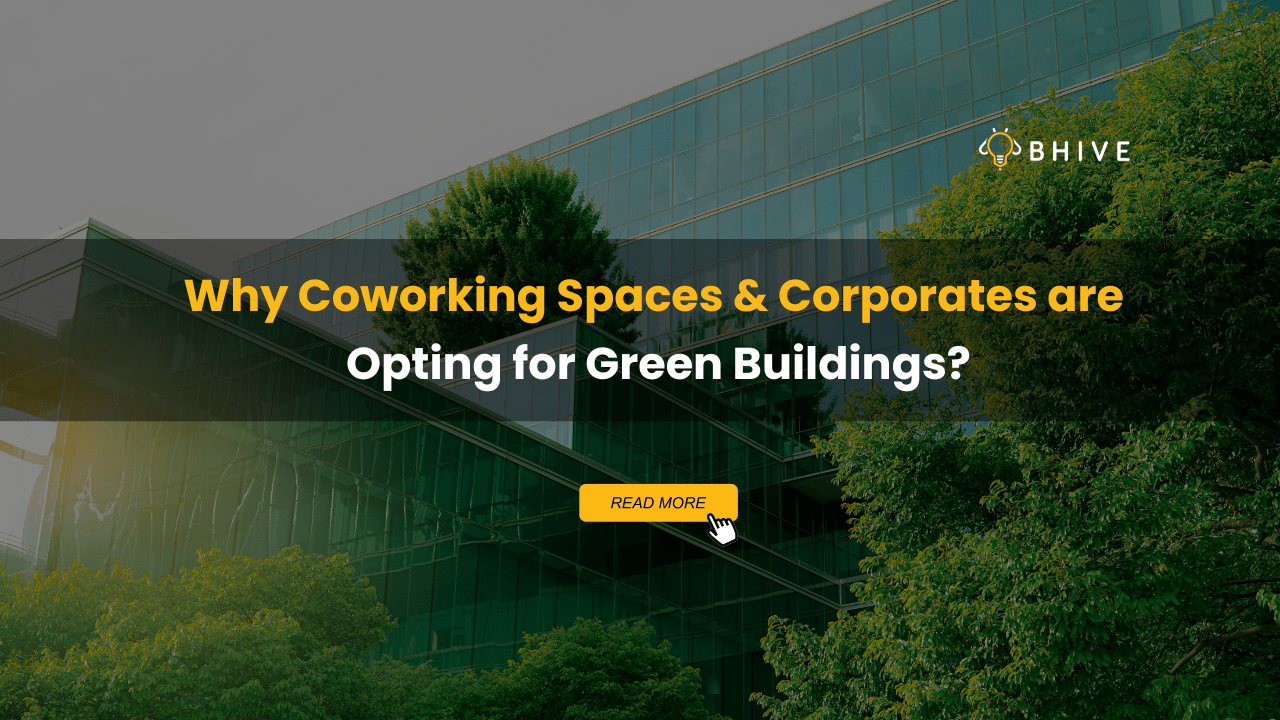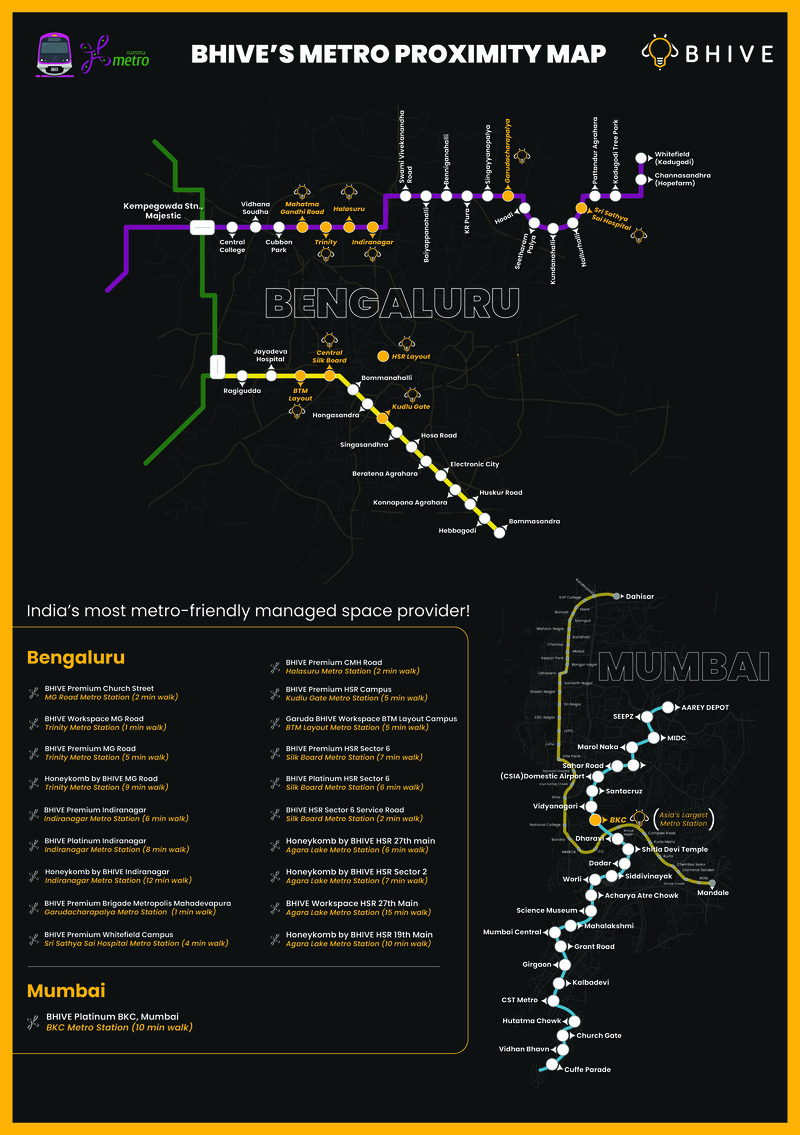Increasing Popularity of Coworking Spaces With Retailers

By converting empty rooms into coworking hubs, retailers are revolutionizing how they use their spaces and leveraging the idea of shared workspaces to enhance foot traffic, draw in a consistent stream of customers, and eventually boost profitability. The demand for flexible workspaces is growing along with the retail business, and coworking and retail are combining to mutual advantage. Let’s examine how this tendency is influencing how retail spaces will develop in the future.
The Shift Toward Coworking Spaces in the Retail Industry
The idea of coworking spaces has become a major force in the office space industry during the past ten years. Coworking spaces, which were first created to provide small businesses, startups, and independent contractors with plug-and-play, reasonably priced office solutions, have grown quickly in response to shifting work demands. The retail sector has also taken notice of this expansion and is now using the coworking concept to rehabilitate their locations and increase foot traffic.
Coworking has been especially popular in India, and industry reports indicate that this is just the beginning. Coworking is poised to transform business reality, according to a 2017 CII analysis. JLL’s research indicates that between 2017 and 2018, the number of coworking spaces tripled, from 1.1 million to 3.4 million square feet. Coworking offers a useful way to make the most of the more than 5 million square feet of empty retail space that was left unfilled in 2017 alone due to dwindling foot traffic.
Looking for the perfect coworking space? Read about enterprise coworking spaces.
How Coworking Spaces Are Transforming the Retail Industry?
Coworking spaces were first created to serve the requirements of startups and freelancers, but they have swiftly expanded beyond these demographics. Coworking spaces are becoming more popular than typical office arrangements for large organizations, remote teams, and even entire departments inside enterprises. The retail sector has taken notice of this change and started using the coworking concept to re-energize its locations and draw steady foot traffic. Retailers understand that coworking spaces may be a two-pronged answer, generating a new source of income while also attracting potential customers with their lively atmosphere.
The Rise of Coworking in India
The coworking movement has grown significantly, especially in India. Coworking spaces are rapidly growing into desirable locations and providing businesses with a dynamic, flexible alternative to long-term leases. A 2017 CII analysis predicts that coworking will change the face of commercial real estate in India and is more than simply a passing fad. Coworking spaces tripled from 1.1 million square feet in 2017 to an astounding 3.4 million square feet in 2018 alone, according to JLL’s real estate studies.
In a retail sector where traditional brick-and-mortar retailers are seeing declining foot traffic, this coworking boom is particularly pertinent. Due to shifting consumer preferences and the ease of e-commerce, physical retailers lost more than 5 million square feet of retail space in 2017. Retailers now have the opportunity to maximize underutilized spaces, attract consistent visitors, and provide a community-centered experience that internet retail cannot match by turning abandoned locations into coworking hubs.
Leveraging Coworking to Combat Declining Footfalls in Retail
In recent years, retail locations have experienced several difficulties, especially in metropolitan areas. Foot traffic has decreased as a result of shifting consumer patterns, the advent of internet shopping, and the growing need for convenience. There are too many empty areas in malls and retail centers as a result of this change in consumer behavior. Coworking spaces, however, offer a prompt remedy for these issues.
More than just filling empty spaces, the creation of coworking spaces in retail establishments revitalizes the neighbourhood by attracting a constant flow of professionals, independent contractors, and business owners who visit these spaces on a daily basis. Because coworking spaces maintain these retail sites lively and relevant, the resulting foot traffic supports local shops and other companies.
The Long-Term Potential for Retail Coworking Collaborations
Additional innovation is made possible by the incorporation of coworking spaces into retail settings. By designing “hybrid” locations that combine food, entertainment, shopping, and work into a single, seamless experience, retailers can expand on the coworking concept. Retailers can rent pay-per-minute seats in coworking spaces under the “retail as a service” concept, which allows for a shared environment that transcends the conventional office or retail arrangement and is perfect for promoting community and in-person interactions.
Why Retailers Are Turning to Coworking Spaces?
Prime Locations with Captive Foot Traffic
Since retailers are frequently located in busy areas, coworking spaces are ideally situated there. Communities with substantial purchasing power surround these locations, which may also draw in foot traffic-generating, internet-savvy customers. Retailers can increase revenue through on-site purchases by turning empty retail spaces into coworking spaces, which draw in a steady stream of consumers and potential clients.
A Fresh Revenue Stream in Uncertain Times
The retail industry’s dependence on foot traffic has been put to the test by the growth of e-commerce. Through flexible, pay-per-seat agreements, repurposing retail spaces as coworking offices not only enables shops to offset leasing expenses but also offers a consistent revenue stream. By using this strategy, retailers can employ coworking spaces as a buffer against the unstable retail environment and diversify their sources of income.
Reinvigorating Brick-and-Mortar: The “Retail as a Service” Concept
With merchants providing shared areas for tenants on a pay-per-minute or pay-per-seat basis, the idea of “retail as a service” is gaining traction. Visitors are encouraged to buy, mingle, and work under one roof thanks to this adaptable arrangement that fosters face-to-face connection and creates a sense of community around the retail location. Coworking spaces also give other retail spaces, including cafes and bookshops, the chance to take advantage of a steady stream of potential clients.
Coworking Spaces and Retailers: A Symbiotic Relationship
Malls Embrace Coworking to Increase Foot Traffic
One of the most obvious advantages of the coworking-retail collaboration is shopping centers. Malls all around India, especially in Bangalore and Delhi, are renting out unused space to coworking spaces in order to guarantee a steady stream of office workers during the week, which is often when mall foot traffic is at its lowest. Malls are benefiting from this calculated move by keeping a consistent customer base, which raises the exposure and sales potential of the remaining retail establishments.
Collaborative Retail Spaces for Enhanced Customer Experience
Collaborative retail spaces, in which several service providers and retailers share a single location, are becoming more and more popular. Traditional shops occasionally let other retailers operate within while keeping their branding. By providing clients with a wide variety of options in one location, this arrangement not only makes financial sense but also enhances the shopping experience. A coffee shop, bookstore, or gym, for example, could be housed in a retail space to create an immersive lifestyle experience that draws a diverse range of customers.
Retail Innovation: Towards a Shared Future
The potential for retail innovation has been unlocked by coworking spaces, which have made it possible to move away from traditional leases and toward flexible models that meet the demands of contemporary consumers and offer a variety of services under one roof. As coworking continues to grow in popularity, it is evident that combining coworking with retail creates a vibrant atmosphere where companies can work together, draw in new customers, and strengthen relationships within the community.
7 Tips to Choose the Best Coworking Space for Your Retail Business
Selecting the right coworking space for a retail business requires a strategic approach to maximize customer engagement, operational efficiency, and brand visibility. Here are seven essential tips to guide you in choosing the best coworking space for your retail business:
1. Consider Location and Accessibility
Any retail business must have a good location, and picking a coworking space in a busy neighbourhood will help attract more potential clients. Seek out a coworking space in a crowded business district, next to other well-known stores, or in a reputable shopping mall. In order to improve foot traffic and convenience, make sure the area is also reachable by public transportation and has plenty of parking for both clients and staff.
2. Evaluate the Demographics and Foot Traffic
Reaching your target audience might be facilitated by knowing the demographics of the area where a coworking space is located. Seek out a coworking space that draws entrepreneurs and professionals, as these individuals can be your ideal clientele. Additionally, keep an eye on everyday foot traffic, particularly if the coworking space is located inside a mall or retail center. Regular exposure to those who are already interested in browsing or purchasing during their breaks could result from this.
3. Assess the Flexibility of Lease Terms
Flexible lease terms are frequently advantageous for retail firms, particularly in a market that is changing. Make sure the coworking space provides leasing choices that let you grow or shrink as needed. Many coworking spaces provide pay-per-seat or month-to-month agreements, which are perfect for companies that need the freedom to modify space in response to market trends or seasonal demand.
4. Check for Amenities that Support Your Business Needs
Select a coworking space that offers features that complement your company’s activities. Look for locations with private conference rooms, break areas, or lounges where you can engage with clients in a relaxed environment if your retail firm has to hold sales meetings or customer engagement sessions. Furthermore, certain coworking spaces have amenities like Wi-Fi, mail processing, and on-site security, which can make your everyday tasks more convenient.
5. Consider the Brand Fit and Atmosphere
Your brand identity should be reflected in the coworking space’s appearance and atmosphere. While some coworking spaces are created with an artistic or creative atmosphere, others are more contemporary and tech-focused. Customers visiting your business will have a consistent experience if you choose a location that complements your brand image. Additionally, a well-designed environment will boost team productivity and create a favourable impression on partners and clients.
6. Look into Networking and Collaboration Opportunities
Coworking locations are perfect for networking because they frequently promote a collaborative atmosphere. Your retail firm may benefit from the events, training, and networking sessions that many coworking spaces provide. These gatherings provide you the chance to network with other local business owners and present your goods and services to possible clients, partners, or investors at the coworking space.
7. Prioritize Security and Customer Safety
Security is crucial for every retail establishment. Make sure a coworking space has strong security features, including surveillance cameras, secure access systems, and on-site security guards, before choosing one. This guarantees a secure environment for your clients and staff in addition to safeguarding your assets and goods. Ask about these extra safeguards, since some coworking spaces even provide insurance coverage alternatives.
Suggested read: How to Calculate the Right Office Space for Your Business?
Conclusion
The retail and coworking sectors come together to create a thriving ecosystem of common goals and venues. Retailers are reconsidering how their spaces may engage with communities, create connections, and generate income as customer behaviours change and the need for flexible work arrangements increases. Retailers are finding creative methods to keep their properties relevant and productive by turning unused retail spaces into flexible offices. This is drawing in a new clientele of professionals, independent contractors, and companies looking for handy workspaces in busy areas.
In the end, this coworking-retail collaboration is changing how people view and use physical locations. Retailers may create a contemporary, multifunctional destination that satisfies the demands of today’s consumers while adjusting to the shifting dynamics of the commercial real estate market by combining work, shopping, and leisure. BHIVE offers an innovative strategy that promises to maintain retail locations’ relevance, adaptability, and close relationships to the communities they serve.






